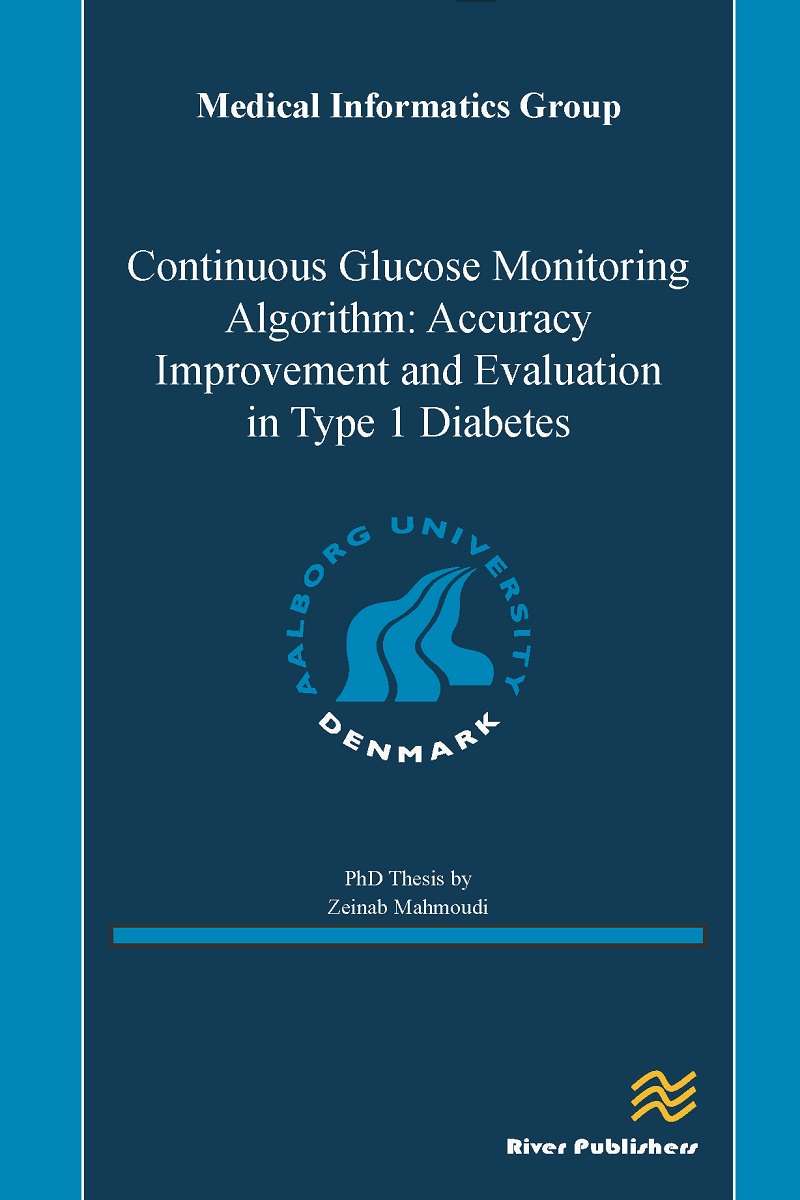River Publishers Series in open
Continuous Glucose Monitoring Algorithm: Accuracy Improvement and Evaluation in Type 1 Diabetes
Author: Zeinab Mahmoudi, Medical Informatics Group, Department of Health Science and Technology, Aalborg University, Denmark
ISBN: 9788793237360 (Hardback) e-ISBN: 9788793237377
Available: December 2014
The biggest challenge in management of type 1 diabetes is lowering high blood glucose (BG) into normal glucose range by means of intensive insulin therapy, without increasing the risk of hypoglycemia. Therefore, it is of crucial importance that BG be monitored continuously for detection of hypoglycemia and subsequent treatment. The isolated selfmonitoring of BG is unable to detect hypoglycemic episodes sufficiently. Continuous glucose monitoring (CGM) provides frequent information about BG, which can facilitate detection of hypoglycemia. The main obstacle facing CGM systems is the large deviation of CGM readings from reference BG levels that can cause substantial failure in detection of hypoglycemia, and consequently may result in incorrect recommendations for treatment adjustments. In order to have adequate accuracy, sophisticated signal processing algorithms must be applied to CGM data. Although considerable advances have been achieved in the CGM technology, improving CGM algorithms is still a challenging issue in terms of reducing the filtering delay and increasing calibration sufficiency. In addition, it is of great importance to evaluate the enhanced CGM algorithms from different perspectives. Hence, this PhD aimed at developing a sophisticated signal processing algorithm to enhance CGM accuracy, and explored novel methodologies to evaluate the algorithm. The first aim of the PhD project was to develop a CGM algorithm with an enhanced accuracy. This goal was achieved in study 1 by presenting a two-step algorithm consisting filtering and calibration, and in study 2 by further improving the calibration part. The second aim of the thesis was evaluating the accuracy of the new CGM algorithm from different aspects. The two main evaluation perspectives were assessing the numerical accuracy (study 3), and the clinical accuracy (study 4) of the algorithm. In study 3, the algorithm in study 1 was compared with the commercial algorithm used in the Guardian® REAL-Time (Medtronic Diabetes, Northridge, CA) CGM system, by using numerical performance metrics. In study 4, the impact of the improved numerical accuracy on the precision of the clinicians’ decision making was tested. Based on the results of the studies performed in the thesis, a new signal processing algorithm for filtering and calibration of CGM data is presented. The numerical evaluation of the algorithm indicates that the algorithm is able to reduce the deviation of CGM readings from BG and PG levels, and has an improved performance over the compared commercial CGM algorithm. The clinical evaluation of the algorithm suggests that the higher numerical accuracy of CGM data achieved by the new algorithm can be translated into higher clinical reliability of the CGM-based decision making, which is the ultimate goal for the CGM accuracy improvement efforts.
Continuous Glucose
Monitoring Algorithm:
Accuracy Improvement and
Evaluation in Type 1 Diabetes
